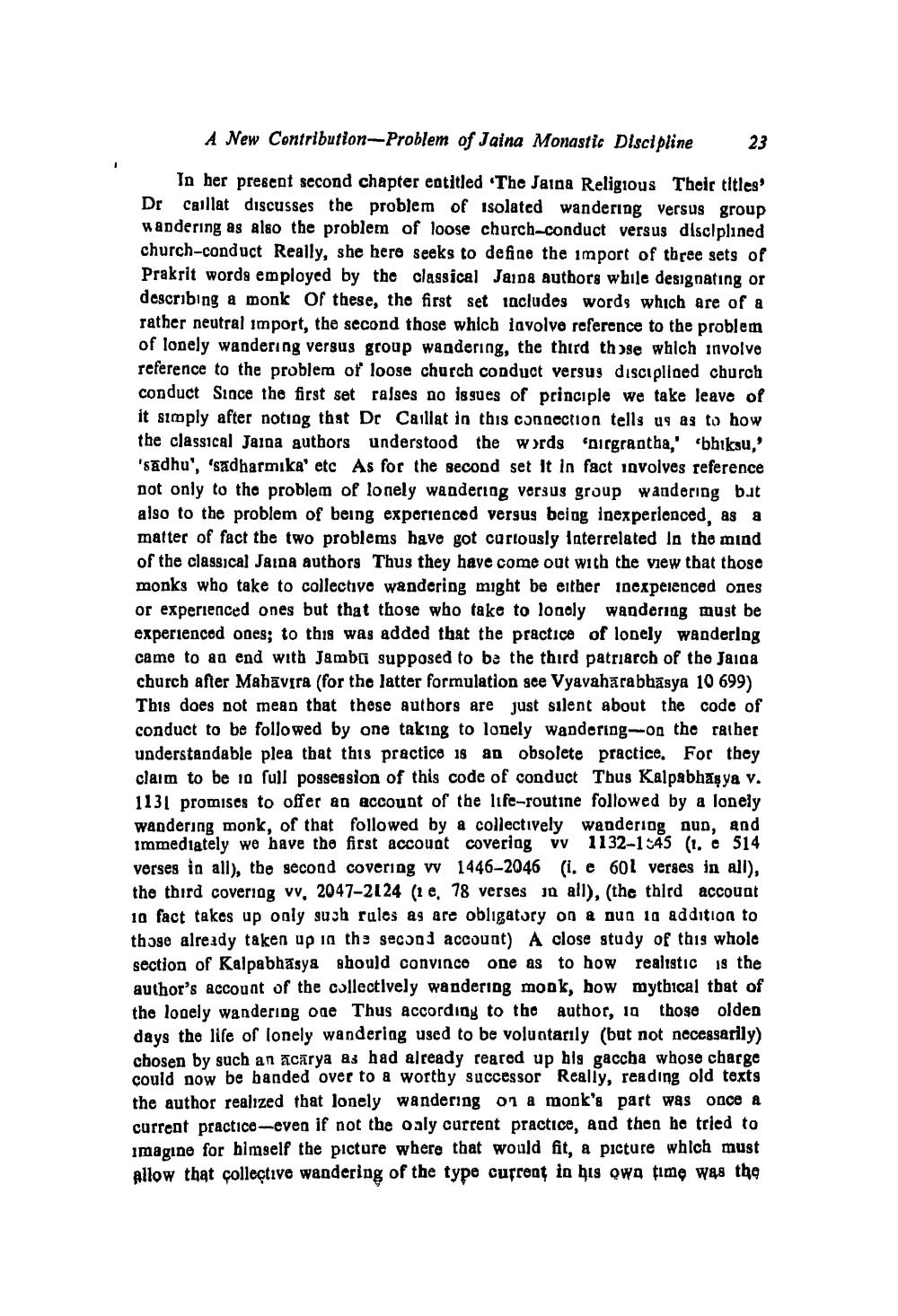________________
A New Contribution-Problem of Jaina Monastic Discipline
port of three sets of
in
the classical Jaipa en
cscribing a monk
In her present second chapter entitled The Jaina Religious Their titles' Dr Caillat discusses the problem of isolated wandering Versus group wandering as also the problem of loose church-conduct versus disciplined church-conduct Really, she here seeks to define the import of three sets of Prakrit words employed by the classical Jaina authors while designating or describing a monk Of these, the first set includes words which are of a rather neutral import, the second those which lavolve reference to the problem of lonely wandering versus group wandering, the third thɔge which involve reference to the problem of loose church conduct versus disciplined church conduct Since the first set raises no issues of principle we take leave of it simply after notiog that Dr Caillat in this connection tells us as to how the classical Jaiga authors understood the words Dirgrantha,' bhiksu, 'sadhu', 'sadharmika' etc As for the second set it in fact involves reference not only to the problem of lonely wandering versus group wandering but also to the problem of being experienced versus being inexperienced, as a matter of fact the two problems have got cartously Interrelated in the mind of the classical Jaina authors Thus they have come out with the view that those monks who take to collective wandering might be either inexpeienced ones or experienced ones but that those who take to lonely wandering must be experienced ones; to this was added that the practice of lonely wanderlag came to an end with Jambe supposed to be the third patriarch of the Jaiga church after Mahavira (for the latter formulation see Vyavahārabhāsya 10 699) This does not mean that these authors are just silent about the code of conduct to be followed by one taking to lonely wandering-on the rather understandable plea that this practice 18 an obsolete practice. For they claim to be 10 full posseasion of this code of conduct Thus Kalpabhagya v. 1131 promises to offer an account of the life-routine followed by a lonely wandering monk, of that followed by a collectively wandering nun, and immediately we have the first account covering vv 1132-1945 (1.6 514 verses in all), the second covering v 1446-2046 (I. e 601 verses in all), the third coveriag vv, 2047-2124 (1 e, 78 verses ja all), (the third accouat 10 fact takes up only sugh rules as are obligatory on a nuo 10 addition to those already taken up in the second account) A close study of this whole section of Kalpabhāsya should convince one as to how realistic is the author's account of the collectively wandering monk, how mytbical tbat of the lonely wandering one Thus according to the author, 19 those olden days the life of lonely wandering used to be voluntarily (but not necessarily) chosen by such an acarya 83 had already reared up his gaccha whose charge could now be banded over to a worthy successor Really, reading old texts the author realized that lonely wandering on a monk's part was once a current practice--even if not the caly current practice, and then he tried to imagine for himself the picture where that would fit, a picture which must allow that collective wandering of the type current in his owa time w48 the




